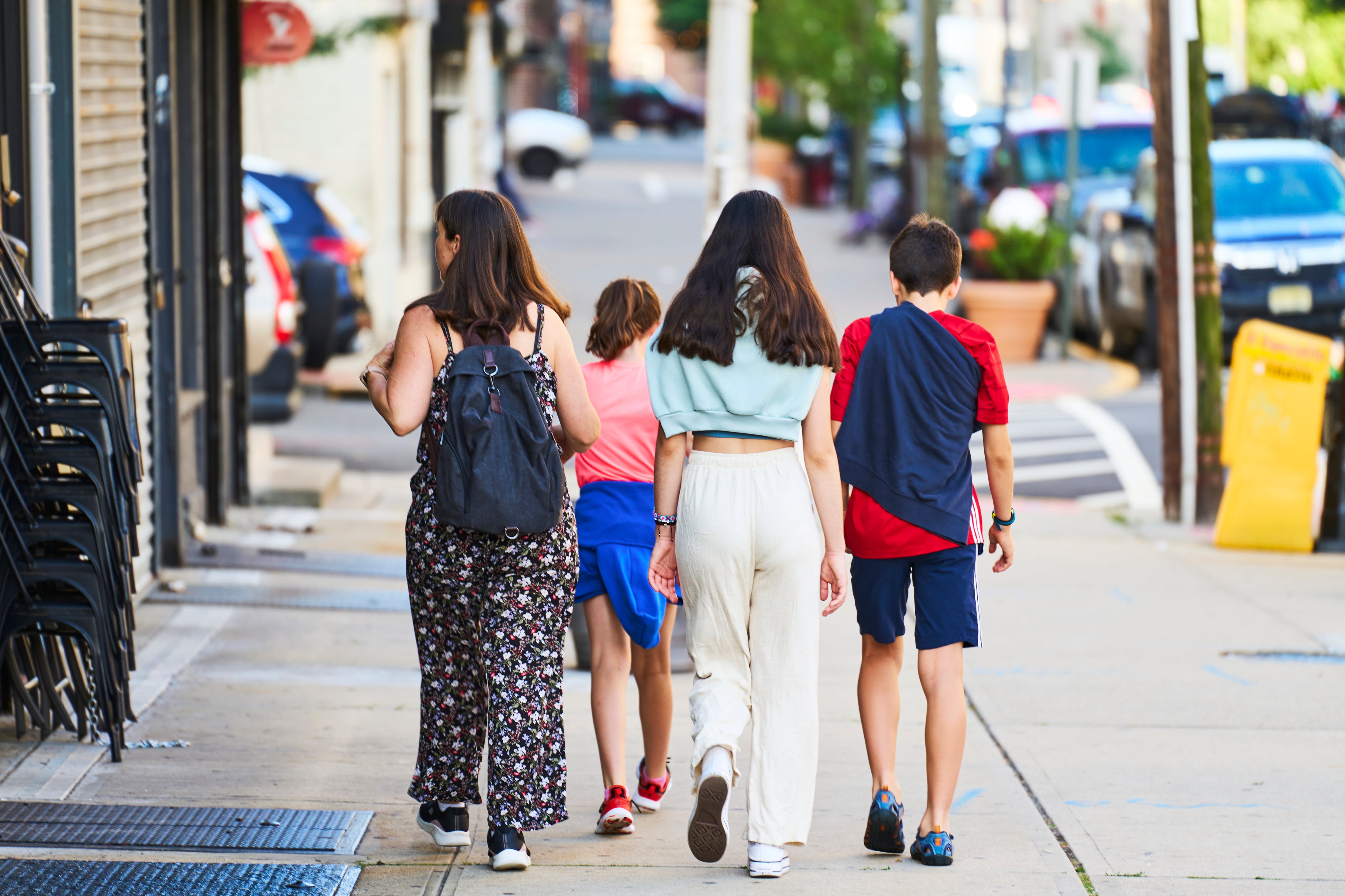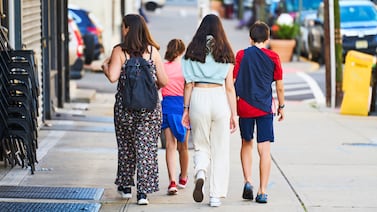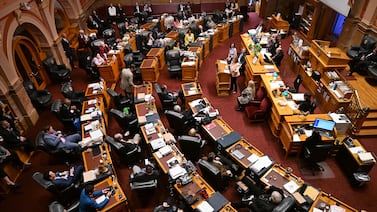Sign up for Chalkbeat New York’s free daily newsletter to get essential news about NYC’s public schools delivered to your inbox.
As enrollment in New York City’s public schools plunged in recent years, city officials said reversing the trend would be a major priority.
New statistics offer some clues about why many families left: A desire for better instruction and concerns about school safety, according to survey results the Education Department released Friday.
About 41% of families who left the system said more rigorous instruction was one of their top reasons for withdrawing. Another 40% cited a move away from the city. One in four families pointed to concerns about school safety.
More than 1,600 families who transferred their children to local private or charter schools, home-schooled them, or left the city between September 2022 and December 2023 responded to the survey.
Education Department officials framed the survey results as a way to better understand parents’ choices, some of which are tied to broader policy issues such as the city’s dearth of affordable housing. Public school enrollment, which was already on the decline before COVID hit, is now 11% below pre-pandemic levels, with 815,000 students in grades K-12. And officials predict the numbers will continue to fall over the next decade.
City officials have grown increasingly worried about recruiting and retaining families in the nation’s largest school system. Dwindling rosters are prompting difficult decisions about merging and closing schools that are often too small to offer a robust set of programs and extracurricular activities.
Among families who departed the city, half listed “concerns about schools” as one of their top five reasons for leaving. Nearly two-thirds said they were looking for a better environment to raise their family, half said they were looking for bigger homes, 42% cited concerns about crime, and 36% said they were looking for more affordable housing.
The city is trying to win families back, and officials pointed to some existing efforts to improve the system: overhauling reading and math curriculums and recruiting parent volunteers to help address chronic absenteeism. Officials are also launching a wave of selective high schools in higher-need neighborhoods.
“I am committed to listening to our families and following their lead as we shape our schools to best serve our children,” schools Chancellor Melissa Aviles-Ramos said in a statement. “Understanding why families may choose to leave a NYC public school is an essential part of that work.”
The survey results are also notable for what families did not seem to prioritize when they chose programs outside the city’s public school system.
Only about one-third of families cited school diversity or a culturally relevant curriculum as significant factors. About 41% listed career preparation programs such as apprenticeships, which public schools have increasingly invested in under Mayor Eric Adams. By contrast, 74% of families said they prioritized schools that felt supportive and welcoming.
Still, multiple experts said the results offered little in the way of policy guidance and included significant limitations.
Only about 3% of families who left the city’s public schools responded to the survey, raising concerns that caregivers who did not answer may have been more likely to offer different responses.
Plus, it is difficult to interpret what families mean when they list concerns about broad issues such as academic rigor or school safety, said Aaron Pallas, a professor at Columbia University’s Teachers College.
“It’s not something that I think is totally worthless,” Pallas said of the survey results. “On the other hand, I don’t think it’s telling us much that’s actionable.” Information the Education Department collected from focus groups that were conducted separately from the survey could be more useful in understanding families’ decision-making at a more granular level, he said.
Jen Jennings, a Princeton University sociology professor who has studied the city’s public schools, noted there is often a disconnect between how people respond to surveys and the reasons motivating their decisions. When families raise concerns about school safety, for instance, some research suggests they might be responding to a school’s racial composition, Jennings said.
Still, listening to what families say about their enrollment decisions can be worthwhile on its own.
“If a value of the system is getting feedback and what they’re trying to do is engage families and let them know that they care,” Jennings said, “this could have a really important purpose.”
Alex Zimmerman is a reporter for Chalkbeat New York, covering NYC public schools. Contact Alex at azimmerman@chalkbeat.org.







